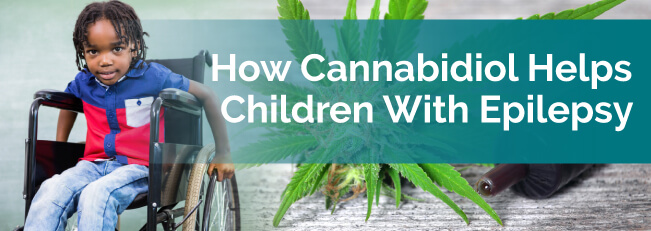
More and more medical professionals are beginning to realize cannabis is a credible medication for a long list of conditions. Among these, marijuana has been proven very effective for the treatment of epilepsy. Approximately 470,000 children have active epilepsy. However, with its known psychoactive side effects, is it ethical to treat kids struggling with the disorder with cannabis?
Cannabidiol (CBD) is one of the active compounds found in marijuana that gives the plant many of its benefits. CBD has medical applications, one of which is as an anti-epileptic. This is great news for children struggling with childhood epilepsy for two reasons:
There are different types of seizures and various forms of epilepsy. Seizures can range from:
Many forms of epilepsy that develop in childhood are known as “syndromes.” This means they have specific signs and symptoms allowing them to be grouped. Some of the most common childhood epilepsy syndromes are:
Each syndrome varies widely. Some are benign, meaning once your child reaches a certain age they’ll no longer have seizures. Others, however, are severe, chronic, difficult to control and can lead to learning and behavioral difficulties. For these syndromes, you’ll need to work with your doctor to come up with a treatment plan for your child.
The most common treatments for childhood epilepsy are anti-epileptic drugs (AEDs). Although these can’t stop a seizure as it happens, they’re used to prevent them from happening in the first place. Often only one type of medication is needed, but sometimes doctors use several in combination with each other.
Unfortunately, these treatments present potentially harmful side effects, such as:
AEDs only work in about 80 percent of cases. The other 20 percent have to find alternative treatments. These can include changes in diet, vagus nerve stimulation therapy or even surgery — but even these treatments can fail. In those cases, the child is thought to have treatment-resistant epilepsy.
In 2013, a survey was conducted among parents who have children with treatment-resistant epilepsy. The report stated that when these parents began using cannabidiol-enriched cannabis, 84 percent found the frequency of their child’s seizures was reduced. Over half discovered their children presented little to no seizure activity.
When a person experiences a seizure, there’s an excessive amount of electrical activity in the body. Cannabidiol works naturally with our body’s endocannabinoid receptors to quiet that excess. However, no one knows why or how yet, as research in this field is limited due to the federal ban on marijuana.
In comparison to traditional AEDs, parents who use cannabidiol treatments have found additional benefits including:
The biggest fear is that using cannabis will cause children to get “high.” However, CBD treatments have very little THC. THC is another prevalent compound in marijuana, which is what gives the plant its psychoactive side effect. CBD treatments present little to no risk of this — that’s why marijuana rich in CBD or cannabidiol oil treatments are such an effective therapy for children with epilepsy.
For more information about how cannabis can be used to treat Epilepsy, check out our resources: